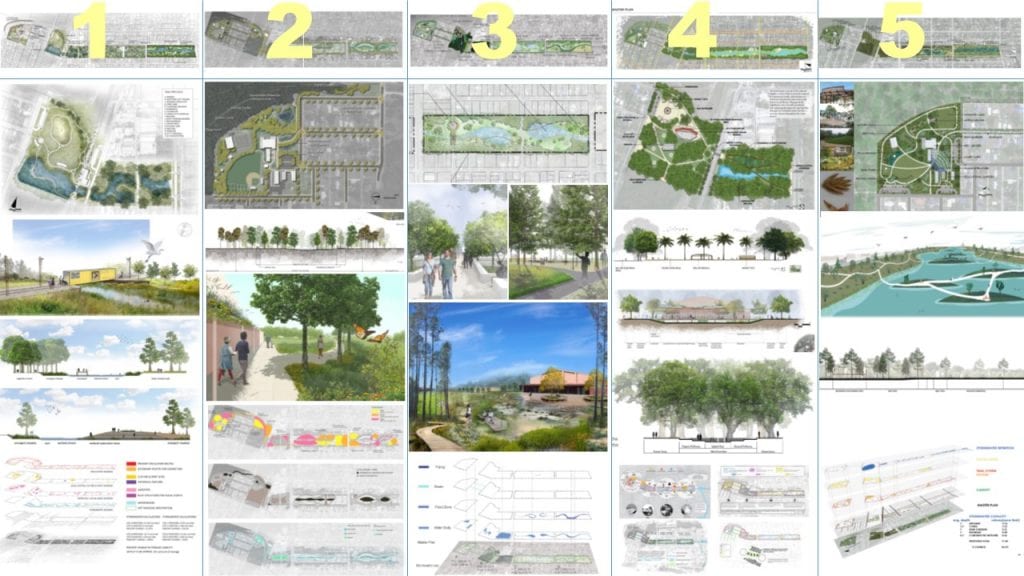Building a Resilient Park System
in Port St. Joe
Port St. Joe (PSJ) is a relaxing vacation destination located on the Florida Panhandle. On October 2018, the City was hit by Hurricane Michael, one of the four Category 5 U.S. storms on record (Walmsley, 2019). Beyond tremendous hurricane impacts such as loss of housing and damage to utility infrastructure, the City has also been experiencing economic decline and insufficient social bonds. This project aims to take the opportunities city parks provide to retain stormwater, minimize the risk of inundation surge, promote outdoor activities and a healthy lifestyle, and establish neighborhood connections. We hope this project will contribute to a resilient and holistic neighborhood in Port St. Joe.
The project is composed of research and design. The research focuses on investigating the key factors that contribute to social resilience through a literature review and a user survey. The research results were presented to the LAA 3350C Landscape Architecture Site Planning and Design studio to assist students in redesigning the selected parks. These design proposals will help create an attractive park system that serves as inclusive and vibrant spaces for people to live, work, and play in addition to capturing and treating stormwater runoff.

TEAM
Yi Luo, Assistant Professor, Department of Landscape Architecture, Yi.luo@ufl.edu
Michael Volk, Research Assistant Professor, Center for Landscape Conservation and Planning, mikevolk@ufl.edu
Kanglin Chen, Doctoral Student & Research Assistant, Department of Landscape Architecture, kanglingchen@ufl.edu
Collaborating Students: Nora Abbot, Maceo Abreu, Julia Best, Eliza Breder, David Erin, Isabella Guttuso, Nicole Herrera, Yu-Ya Huang, Baptiste Humeau, Blake Linquist, Pedro Llanos, Tamarind Matthews, Kyle Peterson, Jarred Randall, Phillip Seymour, Kathryn Stenberg, Julia Walton, Hongpei Xiang, Yanni Xu.
Community Partners: Michael Lacour, Financial Analyst & Fair Housing Coordinator, City of Port St. Joe. Bill Kennedy, Port St. Joe Redevelopment Agency.